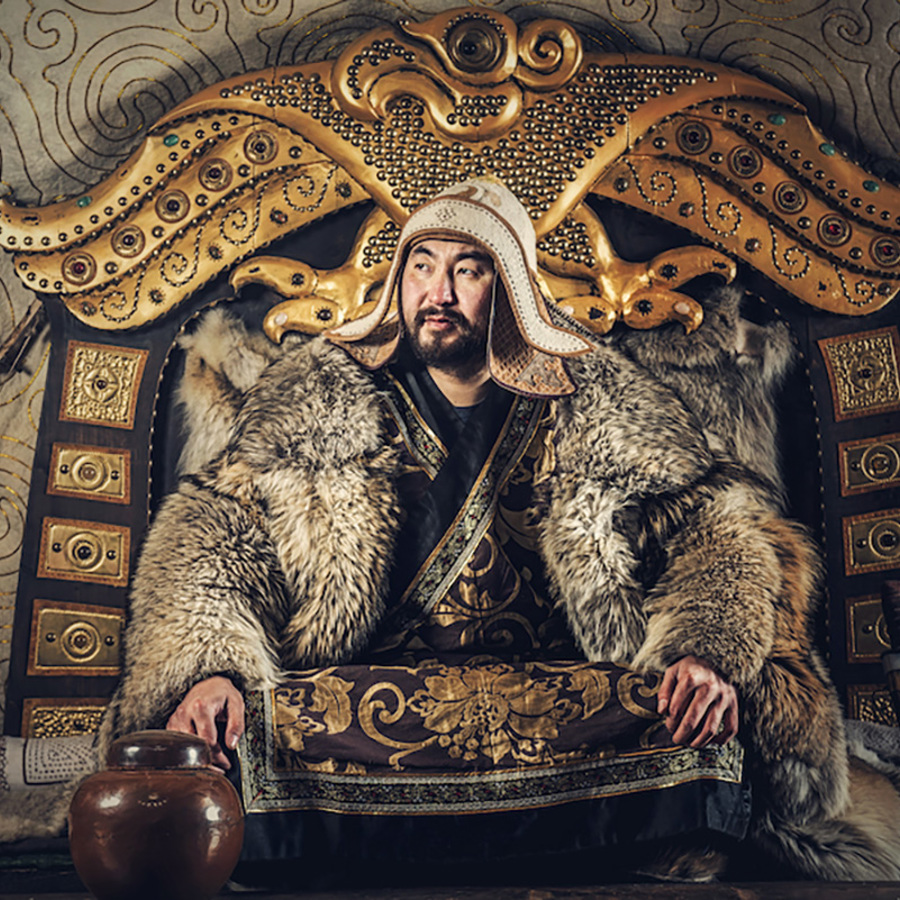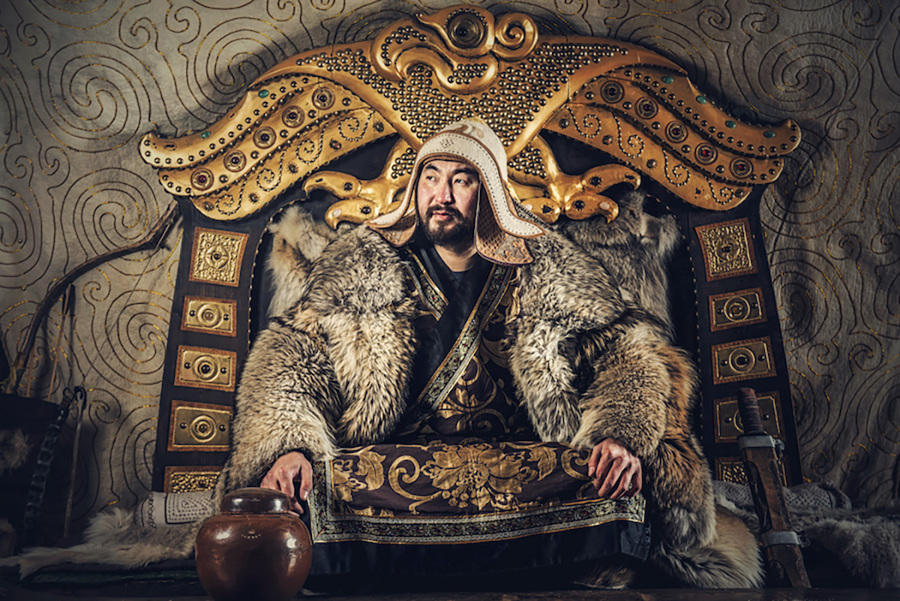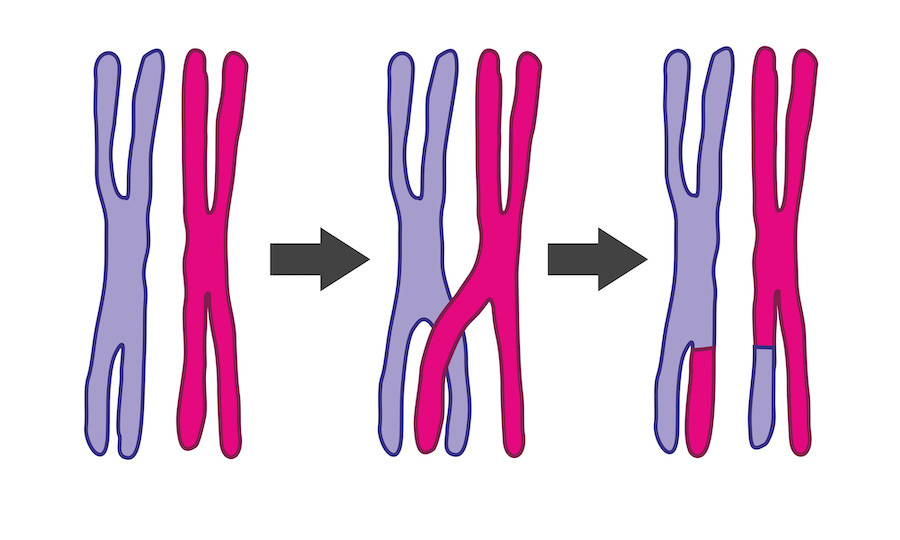
Am I related to Genghis Khan?
November 12, 2010

- Related Topics:
- Y chromosome,
- Ancestry,
- Ancestry tests
A curious adult from California asks:
“Am I related to Genghis Khan?”
That is an interesting question! While I can’t tell you about your relation to the Mongolian conqueror, your DNA can.
Remember, you got your DNA from your mom and dad. And they got their DNA from their mom and dad. And so on.
Keep going back and you eventually get to when Genghis Khan was busy having kids. If some of his DNA is passed down through the generations to you, then you are related. And you wouldn't be alone.
Scientists have looked at lots of men and have estimated that something like 0.5% of people with Y chromosomes might be related to Genghis Khan. This translates to an amazing 12 million people.1 Talk about being busy!

Here are a few companies that can look at your DNA and tell you if you might be related to Genghis:
- AncestrybyDNA
- Oxford Ancestors
- Genetic Genealogy
- Family Tree DNA
I haven’t used these tests before so I can’t vouch for the companies. But I can tell you that these tests will only work if you are male or have a male relative tested.
There are a couple of reasons why we can only trace the male line back to Genghis Khan. One has to do with how our DNA is passed down. And the other has to do with the fact that we don’t actually have any of Genghis Khan’s DNA to look at.
Scientists are guessing that DNA that is shared by so many people must have come from someone who killed off a lot of males and fathered a lot of children. They can also trace this shared DNA back to the 10th or 11th century. Putting two and two together here gives you Genghis Khan.1
If we had Genghis Khan’s actual DNA, then we could trace back to his mother’s DNA too. This would mean we could trace the female side as well. We’ll have to wait for scientists to find Genghis Khan’s grave before we can do that though.
In the meantime, what I thought I’d do for the rest of the answer is focus on why we are so limited in the DNA we can look at when we go back 1000 years. As I said, it has to do with how our DNA is passed down.
Most of your Chromosomes are not the same as your Parents'
Most people have 23 pairs of chromosomes (for a total of 46). For 22 of those 23 pairs, each chromosome in the pair is nearly identical.
For example, the two chromosomes that make up pair #1 are nearly the same. Same thing with pairs 2-22.
We have pairs of chromosomes because we get one of each pair from our mom and one from our dad. So dad gives us a Chromosome 1 and so does mom. Again, this happens for Chromosomes 2-22 too.
Now mom and dad don’t give us an exact copy of their Chromosomes 1-22. Instead, they give us a mix of their two Chromosome 1’s, a mix of their two Chromosome 2’s, and so on.

This mixing of DNA is called recombination and is a big reason why siblings are so different. But it wreaks havoc with ancestry testing because there are lots of changes made with each generation.
By 40 generations ... forget about it! 40 generations is approximately the number since Ghengis Khan was alive. In that amount of time, it’s also extremely likely that descendants have no DNA left from Khan, simply because of the random way recombination occurs.
You may have noticed that I said we have 23 pairs of chromosomes but that I have only been talking about 22 of them. That is because the last pair doesn’t match in men. This means that these two chromosomes don't swap DNA — which means you can trace one of them further back in time.
It's Lonely Being a Y
Most women have 2 matching X chromosomes, which pair up and swap. Most men, on the other hand, have an X and a Y and these chromosomes can only match up at the ends.
Because the Y-chromosome can’t pair up to any other chromosome, its DNA doesn’t swap every generation. This means the same chromosome gets passed down, unchanged, from father to son. This is perfect for figuring out ancestries.
The problem is that only males have a Y-chromosome. A father always passes his Y-chromosome to his sons but never to his daughters.

So males are all set to discover what other males they are related to through their paternal line (including Genghis Khan). Unfortunately, females are out of luck ...
But all hope is not lost! Females can get information from a dad or a brother (with the same dad). And she can also trace her ancestry using another bit of DNA that is different than the rest — her mitochondrial DNA.
Your Cell’s “Powerhouse” has DNA too
Our DNA is important enough that it is stored in a special compartment in the cell called the nucleus. Well, most of our DNA is there. But there is a little bit in our mitochondria too.
All of our cells have mitochondria. They are little organelles that pack a big punch. In fact, they are called the powerhouse of the cell because they make its energy.
The DNA that is found in the mitochondria is called mitochondrial DNA or mtDNA for short. mtDNA doesn’t match up with any chromosomes because it isn’t in the nucleus with the other DNA. No matching up means no swapping — which means this is another bit of DNA perfect for tracing ancestry.
Moms pass on their mtDNA to their children. Only a female can pass her mtDNA to her daughter or son. The daughter will then pass it on to her children.
This means that mtDNA is a powerful way to follow a maternal line through history. Which doesn’t help with Genghis Khan since he was male! But if we had his mtDNA sequence, we could learn about his mother and could find any present-day descendants of her.

Y-Chromosomal Adam and Mitochondrial Eve
Scientists have actually been able to trace the Y chromosome and mtDNA even further. Using the Y-chromosome, scientists can trace it back to identify a common male ancestor who lived 60,000 to 90,000 years ago. While this individual wasn’t the only person alive at the time, all currently-living males are descended from him.2
And they can trace mtDNA even further. All people alive today share a female ancestor who lived around 200,000 years ago!3 That’s a lot of generations!
So that’s the basics to figuring out your ancestors. Good luck finding out if you are related to Genghis Khan!

Author: Dr. Jan DeNofrio
When this answer was published in 2010, Jan was a Ph.D. candidate in the Department of Genetics, studying mechanisms involved in coral bleaching in John Pringle's laboratory. She wrote this answer while participating in the Stanford at The Tech program.
 Skip Navigation
Skip Navigation
